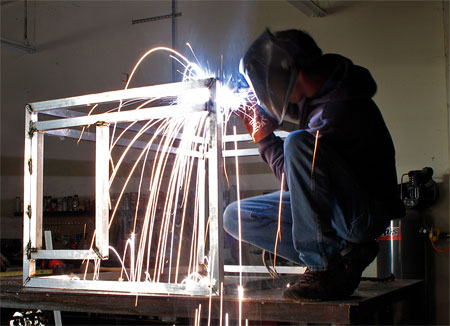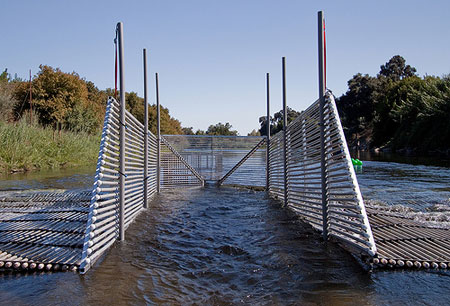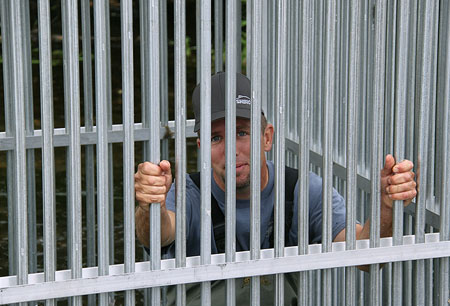Tuesday February 8, 2011

This post is the last in a “how to” series on the basic components of building a fish counting weir. A weir can have many uses, in some cases this fence-like structure might be built to exclude fish from a certain location, but the majority of weirs are used to enumerate migrating species or to trap fish in order to collect biological data or brood stock for a hatchery program

For fish counting weirs, an opening must be created in order for fish to be counted as they pass through. This can be achieved by removing one or more resistance weir panels, but is better accomplished by modifying a panel to create a passing chute. Fish migrating upriver encounter the weir and move sideways from bank to bank until they locate the opening. For salmonid monitoring, the passing chute is located near the thalweg where there is ample flow for fish to cue in on. Passing chutes can be fitted with electronic monitoring equipment (VAKI Riverwatcher, Video recorder, PIT tag antenna, etc.) and/or a livebox fish trap.
Fish traps can be as large and sophisticated, or as small and simplified as need for a particular application. A livebox fish tap typically consists of a rectangular cage fabricated from aluminum or galvanized steel to prevent corrosion. One or more fykes are located at the entrance to help guide the fish into the box, and to reduce the likelihood of fish escaping or moving back downstream. Liveboxes may also include a crowder gate that can guide trapped fish to one side of the trap or facilitate removal. Resistance board weirs are gaining recognition as a respected device in fisheries management and we hope that after reading our posts you have better understanding of the process of weir fabrication.
See the other posts from this how to series:
Fish counting weir: how to series
Fish counting weir: substrate rail
Fish counting weir: resistance weir panels
Fish counting weir: rigid weir and bulkhead
Photo source: FISHBIO
